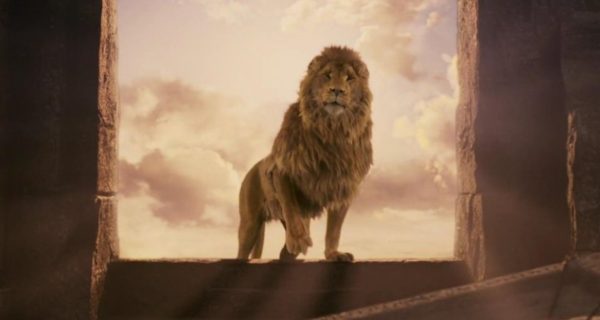Life, death, rebirth. These themes are revisited every year when the flowers bloom again, filling the world with color, like a rainbow had walked through the melting snow. The image of a stone rolled away from the mouth of a cave circulates the web in honor of the Resurrection of the God-Made-Man. And it’s not just in the memes that circle around the world, it’s also in the tales that are such an important part of our libraries, and our imaginations.
The first story that always comes to mind when thinking of the Resurrection is, without a doubt, the Chronicles of Narnia, and for good reason. The imagery of Aslan coming back to life is quite obviously similar to the Resurrection on many fronts, and no wonder, seeing as Lewis notes, rather obviously one might add, that the two are basically the same being. Narnia is a kind of “what if” story. What if Jesus went to another world? What would He look like? Using known symbols that represent Jesus, Lewis chose the regal lion as a form that He could use. As such, seeing a mighty lion willingly give himself up to death for a mere boy hits the Resurrection home in a new way, so to speak. Yes, God became Man so He could die for us, but seeing Him as a mighty lion, this mighty creature with fierce teeth and claws, allowing others to shave him and murder him, it kinda hits a little differently. With Christ, we see a man like us going through excruciating pain for us, we can relate on that level. But to see a mighty lion shows us the God side of things, in a way. We see a mighty being brought low for the sake of a boy, we really come to understand that God brought Himself down willingly to give us the chance of a lifetime, an eternity with Him.
In the Lord of the Rings, we kind of get three resurrections, that of Gandalf, Aragorn, and Frodo. Gandalf, like Christ, actually dies and is resurrected, brought back more powerful than before, taking on the role of the leader of the wizards, of those left in Middle-earth, that is. Aragorn goes through a more figurative death and resurrection, going through the halls of the dead and coming out on the other side, though the movie does give him a kind of resurrection. Frodo’s death is him practically losing his mind to the Ring and getting it back, in a way, after the destruction of the Ring. Each represents a different kind of death and resurrection, but they do go through it as each is representative of aspects of Christ. Frodo’s resurrection, his spring, is somewhat more tainted, in a way, than the other two as he is shown to be the most human of the three experiences, being the war-torn soldier coming home and seeing home a little differently. Hence maybe why his true resurrection lay beyond the sea.
Plenty of characters have gone through a kind of resurrection, but what about a world? The Neverending Story undergoes just that as Bastian waits until the last moment to say the word to save the mythical land of Fantastica from being wiped from existence. There is a brief moment of darkness before Fantastica comes back in a blaze of glory. While this is less of an allegory or similarity to the Resurrection of Christ, it does bear resemblance to a kind of resurrection mentioned in the Bible, that of the Earth in Revelations, when all of creation will share in its Creator’s glory.
The earth is already going through its own miniature death and resurrection every year, in the seasons of Winter and Spring. And while there is beauty to be found in the white silence of winter, one cannot help but long for the color and liveliness of spring, just like we all ultimately long for the eternity that is Heaven and the new Earth, something we can only touch in the briefest moments of joy and wonder, in our dreams, and in our imaginations.
